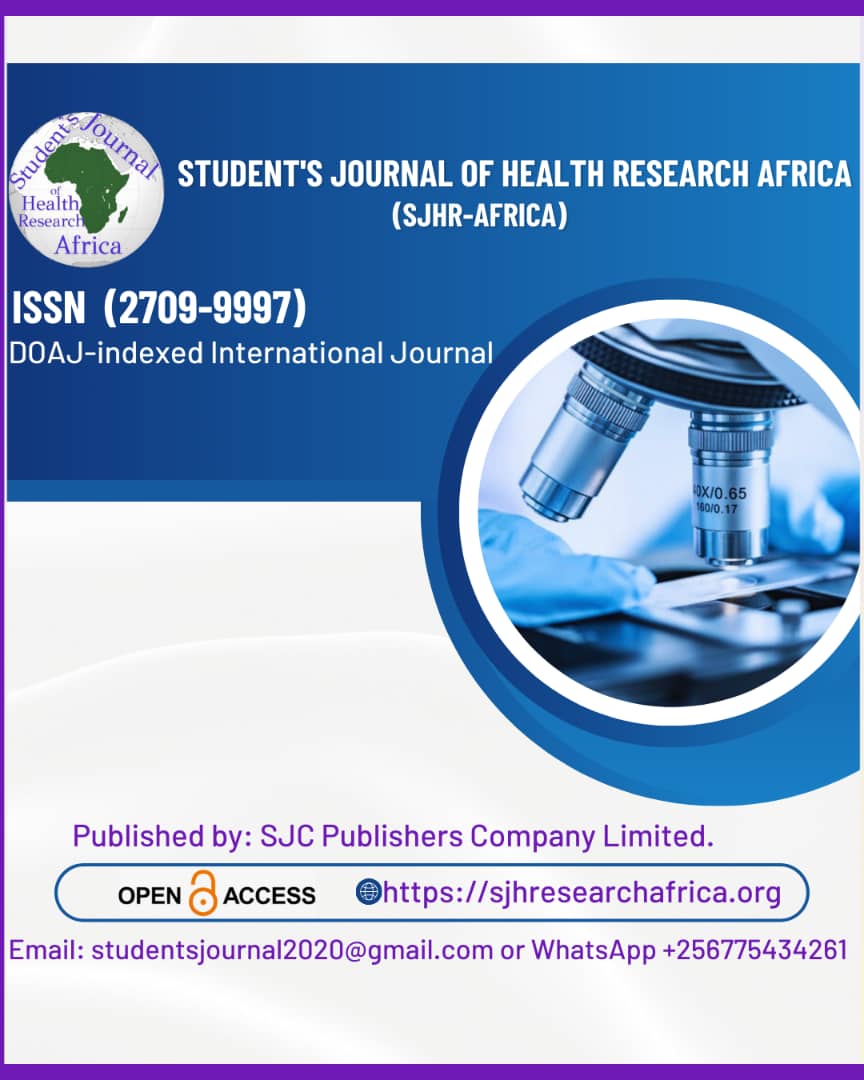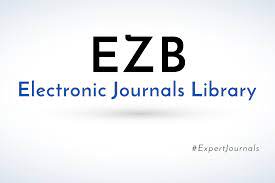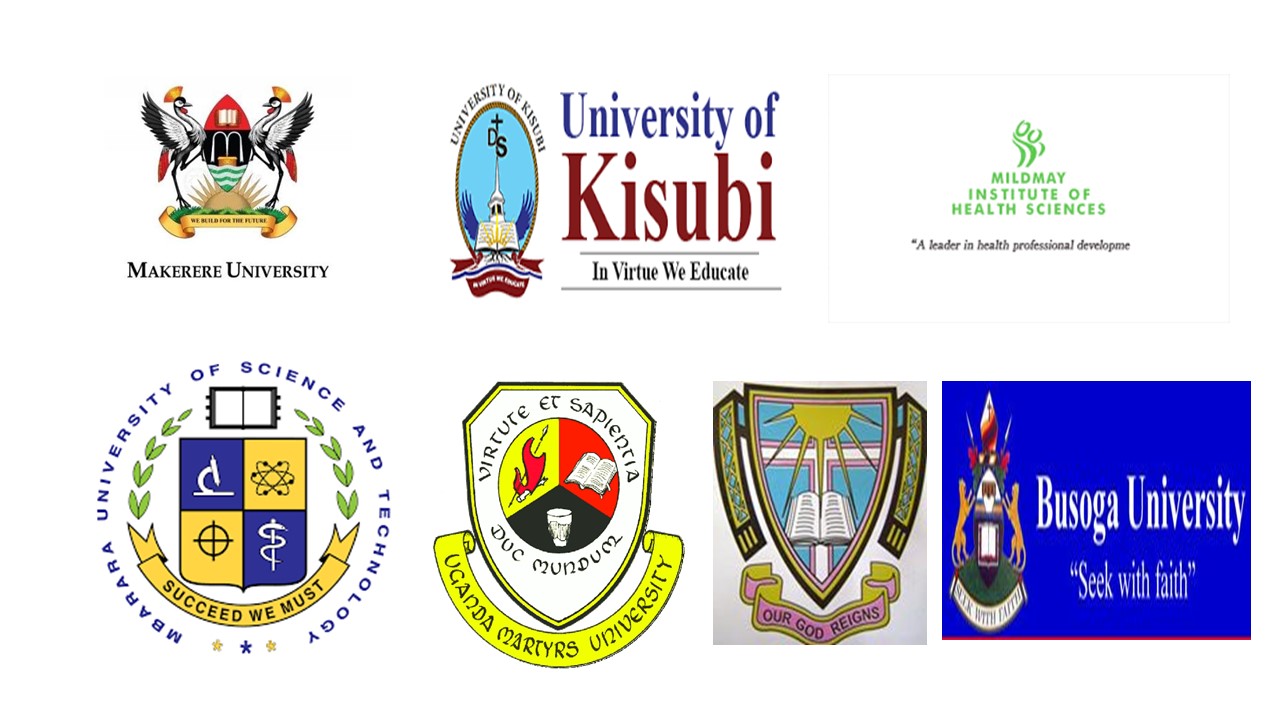Clinico-pathological spectrum of vesiculobullous diseases: A prospective cross-sectional study.
DOI:
https://doi.org/10.51168/sjhrafrica.v6i9.2112Keywords:
Vesiculobullous lesion, pemphigus, bullous pemphigoid, immunofluorescence, histopathologyAbstract
Background:
Vesiculobullous lesions are a heterogeneous group of disorders characterized by fluid-filled cutaneous lesions of varied etiology, including autoimmune, genetic, drug-induced, and infectious causes. Due to overlapping clinical presentations, diagnosis based on clinical features alone is challenging. Histopathology and direct immunofluorescence (DIF) are crucial adjuncts, enhancing accuracy, guiding therapy, and informing prognosis.
Objectives:
To evaluate the histopathological features of vesiculobullous skin disorders, correlate them with clinical findings, and assess the utility of DIF in achieving a definitive diagnosis. Additional objectives were to classify lesions by age, sex, and distribution.
Methods:
This prospective cross-sectional study was conducted in the Department of Pathology, D.Y. Patil School of Medicine, Navi Mumbai. A minimum of 50 clinically suspected cases were enrolled; 56 were analyzed. Clinical history, dermatological examination, and punch biopsies were performed. Routine histopathology was supplemented with DIF in selected cases. Data were analyzed using descriptive statistics.
Results:
The most commonly affected age group was 21–30 years (23.2%). A slight male predominance was noted (53.6%), with a male-to-female ratio of 1:0.87. The trunk was the most frequent site (41%). Clinically, pemphigus vulgaris was most common (23.2%), followed by bullous pemphigoid (12.5%) and Stevens–Johnson syndrome (12.5%). Histopathology revealed intraepidermal blisters as the most frequent pattern (35.7%). DIF showed granular IgG and C3 positivity in pemphigus vulgaris and linear IgG/C3 deposition along the dermoepidermal junction in bullous pemphigoid.
Conclusion:
Clinical features alone are insufficient for accurate categorization of vesiculobullous lesions. Histopathology remains the gold standard, while DIF provides valuable confirmation when findings are inconclusive. Integrating these approaches ensures precise diagnosis, timely treatment, and better prognostic guidance, particularly in autoimmune bullous diseases.
Recommendations:
Routine biopsies with clinicopathological correlation should be emphasized. DIF should be integrated whenever feasible, with improved accessibility and clinician–pathologist collaboration to optimize patient outcomes.
References
Dayananda S Biligi, Shubhashree M N, Histopathological Study of Vesiculobullous lesions of skin, Int J Biol Med Res 2015; 6(2): 4966-4972.
Mysorekar VV, Sumathy TK, Shyam Prasad AL. Role of direct immunofluorescence in dermatological disorders. Indian Dermatol Online J 2015; 6:172-80 https://doi.org/10.4103/2229-5178.156386
Garg R, Bhojani K. Non-infective bullous lesions: a diagnostic challenge in a minimally equipped centre- based solely on microscopic findings. Afri Health Sci. 2020; 20(2): 885-890. https://doi.org/10.4314/ahs.v20i2.42
Raja Vojjala, K. Shyam Sunder. Histopathological study of non-infectious vesiculobullous lesions of skin. IAIM, 2020; 7(5): 39-43.
Gilks Blake. Ovary. John R. Goldblum, Laura W. Lamps, Jesse K. McKenney, Jeffrey L. Myers (Ed.) (2018), Rosai and Ackerman's Surgical Pathology. Philadelphia, Elsevier.
Shekhawat Pratibha, Yadav Ajay, Udawat Hema, Ranawat Chandrajeet Singh, Kotia Suman, Clinico-histopathological Study of Vesiculobullous Lesions of the Skin at Tertiary Care Centre, JMSCR Vol||08||Issue||03||Page 716-724||March 2020. https://doi.org/10.18535/jmscr/v8i3.122
Annu Elizabeth Prakash, Jessy Mangalathu Mathai, Thundi Parampil Thankappan, and Gopalan Sulochana, A Clinicopathological Study of Immunobullous Diseases, Annals of Pathology and Laboratory Medicine, Vol. 6, Issue 2, February 2019. https://doi.org/10.21276/APALM.2179
Deepti SP, Sulakshana MS, Manjunatha YA, Jayaprakash HT. A histomorphological study of bullous lesions of skin with special reference to immunofluorescence. Int J Curr Res Acad Rev.2015;3(3):29-51
Anupama Raj Karattuthazhathu, Letha Vilasiniamma, Usha Poothiode, A Study of Vesiculobullous Lesions of Skin, National Journal of Laboratory Medicine. 2018 Jan, Vol-7(1): PO01-PO06.
Kumar SS, Atla B, Prasad PG, Srinivas KSS, Samantra S, Priyanka ALN. Clinical, histopathological, and immunofluorescent study of vesicobullous lesions of skin. Int J Res Med Sci 2019; 7:1288-95. https://doi.org/10.18203/2320-6012.ijrms20191341
Arundhathi S, Ragunatha S, Mahadeva K.C., A Cross-sectional Study of Clinical, Histopathological and Direct Immunofluorescence Spectrum of Vesiculobullous Disorders, Journal of Clinical and Diagnostic Research. 2013 Dec, Vol-7(12): 2788-2792.
Gupta S, Varma AV, Sharda B, Malukani K, Malpani G, Sahu H. Histopathological findings of vesiculobullous lesions of skin in relation to their clinical presentation: Prospective study from a tertiary care center. MGM J Med Sci 2022; 9:448-58. https://doi.org/10.4103/mgmj.mgmj_154_22
Anirudha Vasantacharya Kushtagi, Vijayashree Shivappa Neeravari, Sidhalingreddy, Pratima S et al, Clinical and Histopathological Spectrum of Vesciculobullous Lesions of Skin- A Study of 40 cases, Indian Journal of Pathology and Oncology, April-June 2016;3(2);152-158. https://doi.org/10.5958/2394-6792.2016.00031.4
Ashutosh Kumar, Ankita Mittal, Rashmi Chauhan, Faiyaz Ahmad, Seema Awasthi, S. Dutta, Histopathological Spectrum of Vesiculobullous Lesions of the Skin: Study at a Tertiary Care Hospital, Int J Med Res Prof.2018 July; 4(4); 250-55.
Ahmed K, Rao TN, Swarnalatha G, Amreen S, Kumar AS. Direct immunofluorescence in autoimmune vesiculobullous disorders: a study of 59 cases. J Dr. NTR Univ Heal Sci. 2014;3(3):164. https://doi.org/10.4103/2277-8632.140935
Shekhawat Pratibha, Yadav Ajay, Udawat Hema, Ranawat Chandrajeet Singh, Kotia Suman, Clinico-histopathological Study of Vesiculobullous Lesions of the Skin at Tertiary Care Centre, JMSCR Vol||08||Issue||03||Page 716-724||March 2020. https://doi.org/10.18535/jmscr/v8i3.122
Anchal Jindal, Rushikesh Shah, Neela Patel, Krina Patel, Rupal P. Mehta, Jigna P. Barot, A cross-sectional study of clinical, histopathological, and direct immunofluorescence diagnosis in autoimmune bullous diseases, Indian Journal of Dermatopathology and Diagnostic Dermatology, 2014 Jan-Jun /Vol 1/Issue 1. https://doi.org/10.4103/2349-6029.
Charisma Kunhi Khannan, Dr Ramesh Bhat M, A retrospective study of clinical, histopathological, and direct immunofluorescence spectrum of immunobullous Disorders, International Journal of Scientific and Research Publications, Volume 5, Issue 9, September 2015, ISSN 2250-3153.
Downloads
Published
How to Cite
Issue
Section
License
Copyright (c) 2025 Dr. Nidhi Naik, Dr. Sudhamani Srinath, Dr. Prakash Dive

This work is licensed under a Creative Commons Attribution-NonCommercial-NoDerivatives 4.0 International License.





















